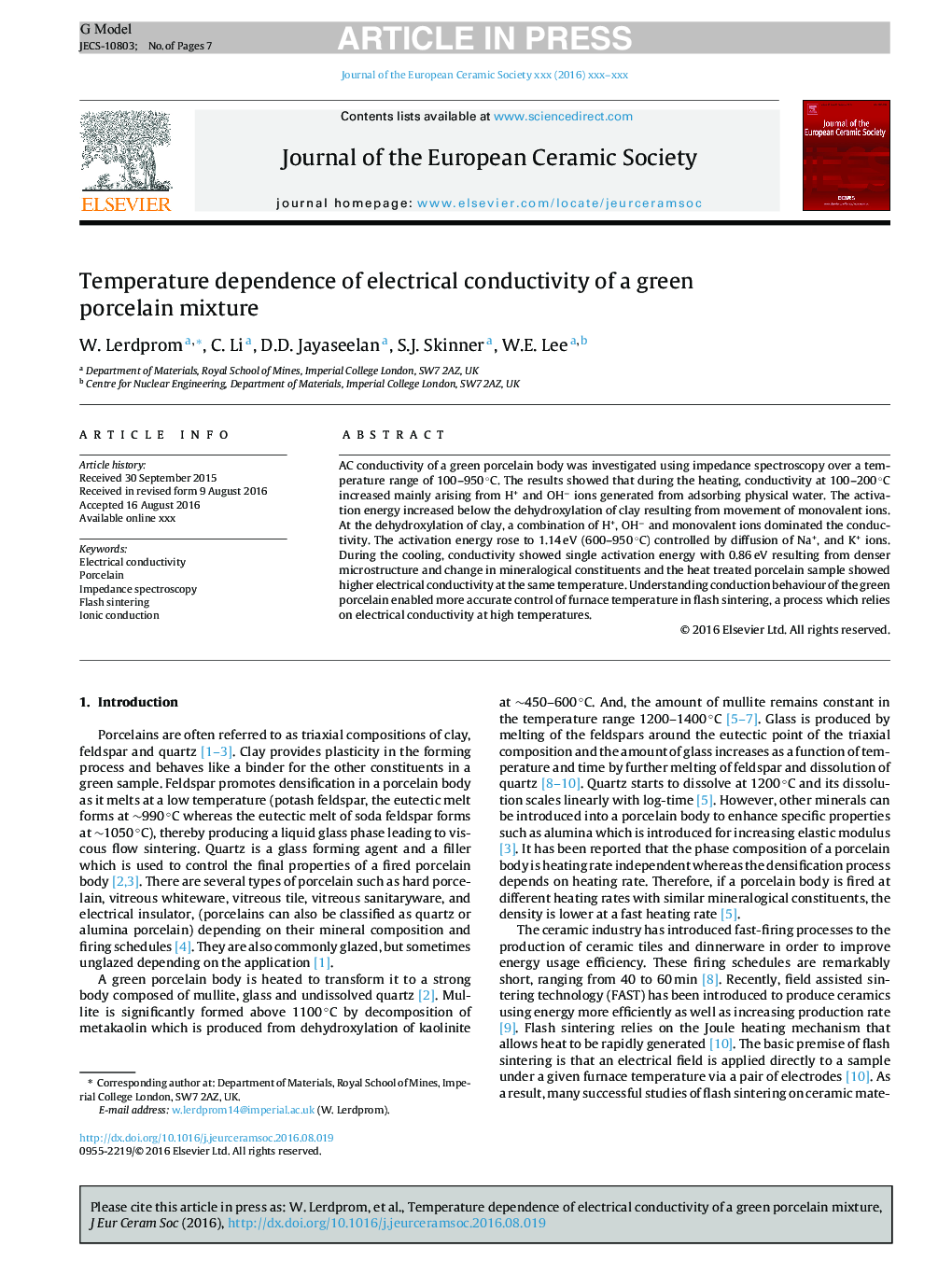| Article ID | Journal | Published Year | Pages | File Type |
|---|---|---|---|---|
| 5440877 | Journal of the European Ceramic Society | 2017 | 7 Pages |
Abstract
AC conductivity of a green porcelain body was investigated using impedance spectroscopy over a temperature range of 100-950 °C. The results showed that during the heating, conductivity at 100-200 °C increased mainly arising from H+ and OHâ ions generated from adsorbing physical water. The activation energy increased below the dehydroxylation of clay resulting from movement of monovalent ions. At the dehydroxylation of clay, a combination of H+, OHâ and monovalent ions dominated the conductivity. The activation energy rose to 1.14 eV (600-950 °C) controlled by diffusion of Na+, and K+ ions. During the cooling, conductivity showed single activation energy with 0.86 eV resulting from denser microstructure and change in mineralogical constituents and the heat treated porcelain sample showed higher electrical conductivity at the same temperature. Understanding conduction behaviour of the green porcelain enabled more accurate control of furnace temperature in flash sintering, a process which relies on electrical conductivity at high temperatures.
Related Topics
Physical Sciences and Engineering
Materials Science
Ceramics and Composites
Authors
W. Lerdprom, C. Li, D.D. Jayaseelan, S.J. Skinner, W.E. Lee,
